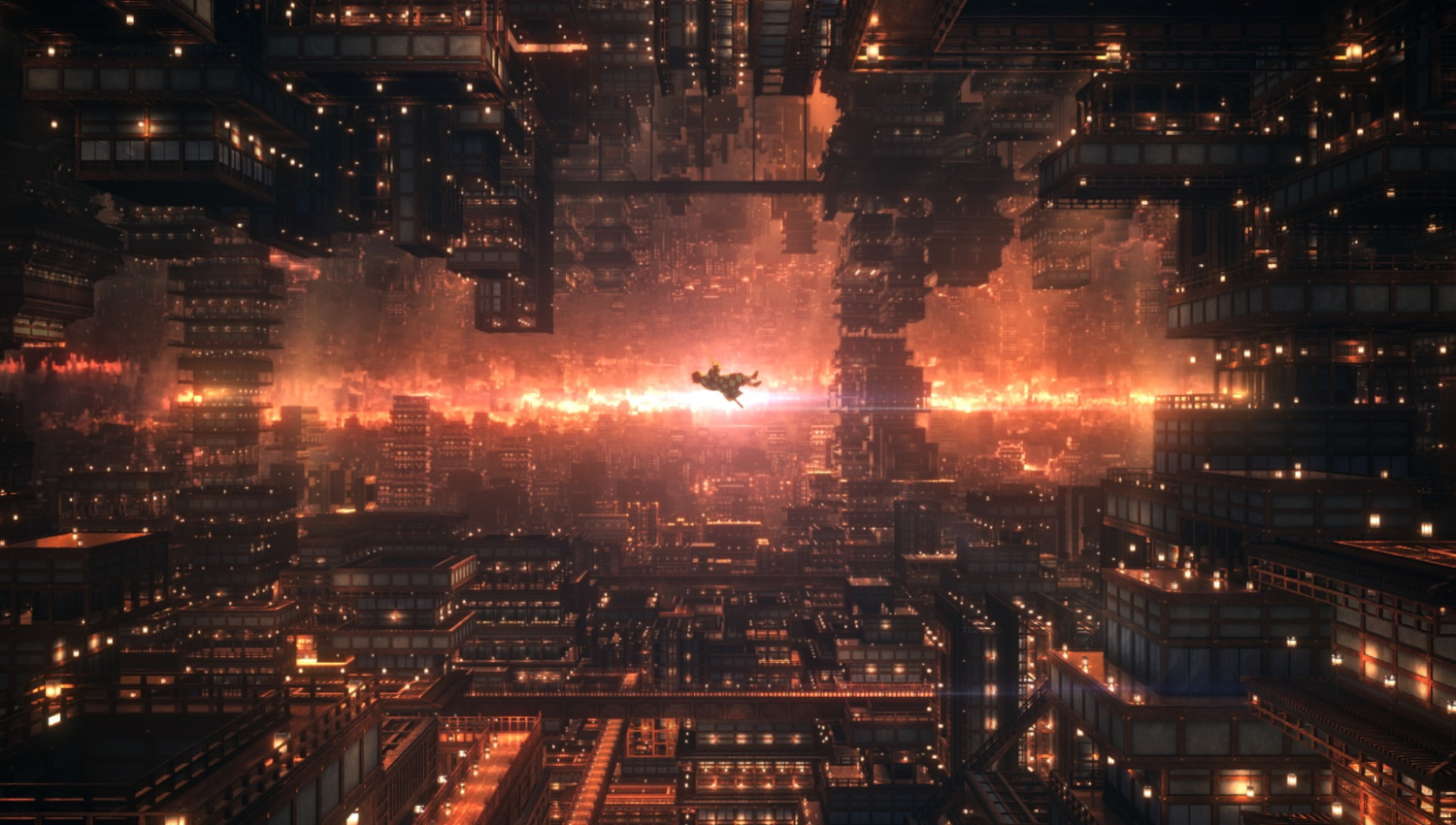“Infinity Castle” arrives like a cathedral built of dread and devotion, a labyrinth where grief learns to sing. Binge-watch the series before watching the film to get the most from Infinity Castle. The film channels years of serialized momentum into one vertiginous drop, landing Tanjiro Kamado and the Demon Slayer Corps inside the demons’ stronghold, a structure that tilts, folds, and blooms like haunted origami. What follows is less a finale than a reckoning: loyalty measured in breath, steel, and belief. As Tanjiro glides through impossible corridors, the score thrums like a war drum with a monk’s restraint, and the geography of combat becomes a theological map.

Tanjiro’s history shadows every footfall. He joined the Corps after Nezuko, his sister, was turned into a demon; the boy’s vow hardened into a vocation. Along the way, he forged bonds with Zenitsu Agatsuma and the boar-helmed firebrand Inosuke Hashibira. He stood beside the Hashira—the Corps’ elite—on the Mugen Train with the blazing Kyojuro Rengoku, in the Entertainment District with percussion-mad Tengen Uzui, and amid the fog and fervor of the Swordsmith Village with Muichiro Tokito and Mitsuri Kanroji. Those chapters return here as muscle memory; friendships become tactics, grief becomes clarity.
The catalyst is Muzan Kibutsuji’s intrusion at the Ubuyashiki Mansion, a strike that collapses strategy into free fall. The Hashira Training, staged as a boot camp of humility and exhaustion, pays dividends once gravity turns traitor. Every duel inside the castle reads like calligraphy written at swordpoint. The animators give motion weight and consequence: sandals scrape, breath techniques ribbon the air, and silence lands with the authority of a drum. You feel fatigue accumulate like snowfall, beautiful and smothering.
“It lets Tanjiro’s kindness function as strategy, not sentiment—a fighting style that refuses to surrender the soul as collateral.”
What distinguishes this entry is its confidence in stillness. Amid baroque spectacle, the film finds room for simple acts—a hand hovering above a hilt, a brother calling a sister’s name. Faith, here, means staying present when the room is tilting. The comedy, a cherished pressure valve, arrives with restraint; it sweetens without sanding down the stakes. When the castle itself becomes a character—capricious, hungry, architectural—it mirrors the moral maze the story has always walked: how to protect light without adopting darkness’s pose.
The set pieces clarify character. Zenitsu’s lightning is revealed by way of panic; Inosuke barrels toward grace like a battering ram, finding rhythm. The Hashira, often paragons at a cool distance, reveal seams and soft tissue. Their mentorship feels earned, not bestowed. Most affecting is the film’s regard for Nezuko, emblem and sibling, whose precarious humanity reframes vengeance as caretaking stretched to its limit.
Not every beat lands. A mid-act detour lingers on explanation, and one face-off seems engineered to tee up future chapters. Yet the cumulative effect is rousing. The movie treats the Hashira not as collectibles but as veterans bearing debts. It lets Tanjiro’s kindness function as a strategy, not sentiment—a fighting style that refuses to surrender the soul as collateral. By the time the final doors open, “Infinity Castle” feels less like an ending than the breath before the note—the sound of resolve taking shape. It leaves you poised on a cliff of feeling, looking down at loss and up at love, and choosing, stubbornly, to climb anyway.
Final Thought
Fans will love it! Newcomers to the saga may feel lost at first, but are likely to be die-hard fans themselves by the end.

